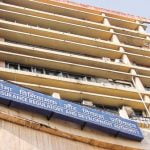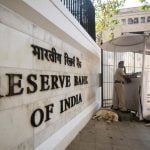
Photo: Hemant Mishra/Mint
At least 90% of India’s 2.2 lakh automated teller machines (ATMs) have now been calibrated to dispense the new Rs500 and Rs2,000 notes, said two people aware of the matter.
The Reserve Bank of India’s (RBI) task force on recalibration of ATMs has been looking at hourly updates on the progress made in making new currency notes available to customers over the past fortnight, according to the people.
The task force, announced on 13 November, is led by RBI deputy governor S.S. Mundra and consists of representatives from the government, large banks such as State Bank of India, Axis Bank, ICICI Bank and HDFC Bank, besides the National Payments Corporation of India and select chief general managers from RBI.
The task force also invited ATM manufacturers, cash in transit companies and managed service providers to be part of their discussions. The task force chose Mumbai as its central location from where it controlled the activities of cash vans and ATM engineers under RBI’s supervision.
The group had set 30 November as the deadline to recalibrate ATMs, said Navroze Dastur, managing director of NCR Corporation India Pvt. Ltd, the country’s largest ATM manufacturer.
“Despite some difficult conditions, we have been able to conduct this major recalibration activity within record time,” Dastur said.
The hurdles during the recalibration of ATMs came in the form of lack of adequate equipment and not enough technicians.
Rituraj Sinha, president, Cash Logistics Association of India, said the main reason the recalibration took time was that a piece of equipment called a “spacer” had to be inserted in each individual machine to enable it to dispense the new notes which are of a different size.
These spacers had to be imported from various plants of each ATM manufacturer, said Dastur, adding that the process could have been faster had the industry had more time to plan and put together resources.
Not all machines have been fixed with spacers yet as it is a time-consuming process. Instead, a temporary dispensation technique has been used in some machines to ensure that they can dispense the new notes for the time being.
According to a spokesperson from Securitrans India Pvt. Ltd (SIPL), a payment and cash management solutions company, spacers will be put into machines as a permanent piece of hardware over the next 90 days. The industry, however, is also still suffering from a shortage of currency notes to put into the machines.
According to data released by RBI, about Rs2.16 trillion had been withdrawn through bank branches and ATMs, as compared with deposits worth Rs8.45 trillion as of 27 November.
“So far, we have been working with the idea that we are providing a service to the people and getting the recalibration out of the way was the most important duty. However, now companies will slowly be assessing the cost of this entire procedure,” said Dastur.
While the cost of the entire recalibration process is only a small portion of the total cost of demonetization by the government, banks will still be liable to pay these companies for the services, he added.
[“Source-Livemint”]




